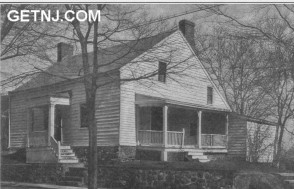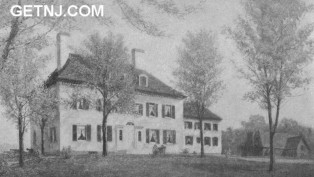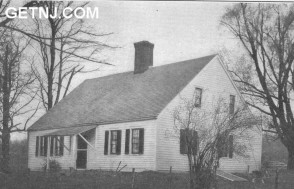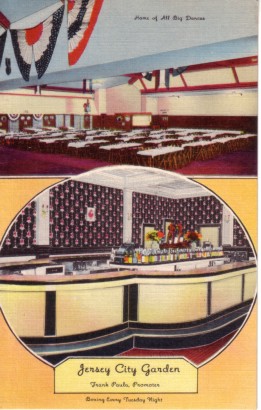Advertise Online
–
SEO - Search Engine Optimization - Search Engine Marketing - SEM
– Domains For Sale
– George Washington Bridge Bike Path and Pedestrian Walkway
– Corona Extra Beer Subliminal Advertising
– Outlaw Motorcycle Gangs
– Pet Care
–
The Tunnel Bar
–
La Cosa Nostra
–
Jersey City Free Books
From Historic Roadsides of New Jersey by The Society of Colonial Wars in the State of New Jersey, 1928
Edited by GET NJ, COPYRIGHT 2002
MORRIS COUNTY
Morris County -- taken from Hunterdon County by Act
of Colonial Assembly of 1738-9 -- included within its limits
territory now forming Sussex and Warren Counties. It was
named after Lewis Morris, Governor of the Province.
MADISON
Settled by emigrants from Long Island. In
Colonial days known as South Hanover, subsequently as Bottle
Hill and in 1834 named Madison by vote of the people. In
1780, when the British tried to surprise Washington at Morris
town, they reached Bottle Hill, but snow, rain, and hail made
the road impassable, and they were compelled to retreat.
Points of interest:
- Sayre House. Ridgedale Avenue, built in 1745 by
Daniel Sayre. Opened to Continental officers and soldiers
during Revolution. Used by General Anthony Wayne as
headquarters while the army was in camp at Loantaka
Valley.
- Bottle Hill Tavern, 127 Main Street. Building originally
stood at Main Street and Waverly Place. Removed to
present location 1923. Owned and occupied by Madison
Historical Society.
- Presbyterian Church organized about 1752.
- House of Major Miller.
- Tomb of Major Miller.
|
 Sayre House, Madison
Sayre House, Madison
|
|
WHIPPANY
Four miles north of Morristown. Site of
first Presbyterian Church in Morris County erected about
1718. First military company in Morris County was formed
in the vicinity of Whippany in the Fall of 1775, under the
command of Captain Morris.
CHATHAM
About three and one-half miles east of
Madison.
Points of interest:
- Ward House, dated 1740.
- Talmadge Homestead, where Washington was a guest.
- Shepard Kollock's printing house where New Jersey
journal was published. Opposite Morrell House.
- Morrell House. East Main Street. Opposite Presbyterian
Church where Washington frequently stopped.
- Day Mansion. Elmwood Avenue. Site of present Ogden
Memorial Church.
- Hamblin House. Northeast corner of Main Street and
Elmwood Avenue. Home of Mrs. Hamblin, where Gen,
eral Lafayette was entertained in 1825.
- Bonnell Homestead. Watchung Avenue. Home of Mrs.
Bonnell, who baked bread all night to provide soldiers
sleeping on her floors with food for their march to Yorktown, Virginia.
- Chatham Bridge over Passaic River. During the winter of
1779-80, New York Bay froze to such an extent that the
British Cavalry could cross to New Jersey. Chatham
Bridge was guarded day and night to prevent the British
reaching Morristown, Washington's Headquarters. The
bridge was also the scene for the exchange of Prisoners.
MORRISTOWN
About fifty miles from Trenton, twenty-six miles from New York. Settled between 1700 and 1720.
First Presbyterian Church erected in 1740. The Court
House in 1755. Scene of the encampment of Washington's
Army first in January 1777 (after the Battles of Trenton and
Princeton) then again in 1779-80. In 1777 General Washington was
quartered in Freeman's Tavern. In 1779-80 his quarters were
at the residence of Colonel Jacob Ford, now owned and preserved by the Washington Association of New Jersey, which
contains a fine collection of relics. Open to public free of
charge daily, except Thanksgiving, Christmas and Sundays.
The town is the birthplace of General Daniel Morgan.
|
 Washington's Headquarters, Morristown
Washington's Headquarters, Morristown
|
|
 Tempe Wick's House, Morristown
Tempe Wick's House, Morristown
|
Points of interest:
- Dickerson Tavern. Spring and Water Streets. Scene of
Court Martial of Benedict Arnold, presided over by General Robert Howe.
- Campfield House. 5 Olyphant Place. Scene of courtship
of Elizabeth or Betsy Schuyler by Alexander Hamilton,
1779-80, occupied at time by John Cochrane, Surgeon
General of the Continental Army. The house is now
owned by the Morristown Chapter, D.A.R. Open to
public free of charge Tuesdays and Fridays throughout
the year.
- Tempe Wick's House. Jockey Hollow Road. Frame
house occupied by Wick family. Made notable by exploit
of Tempe Wick who hid her horse in her bedroom for
three days.
- Liddell House. Jockey Hollow Road. Built of stones used
in the fireplaces of the soldiers' huts in the Revolution.
- Fort Nonsense. On western outskirts of the town is a high
hill known as Fort Nonsense. Site of series of earth-works
built by order of General Washington to protect encampment from possible assault. Because the earth-works were
never used, the hill received the name. Site of earth-works
marked by boulder erected by Washington Association of
New Jersey.
- Sun-dial erected by Morristown Chapter, D.A.R., on the
grounds of Memorial Hospital, where in 1777, at an open
air service of the Presbyterian Church, General Washington partook of Holy Communion.
- Monument on jockey Hollow Road erected by Morristown Chapter, D.A.R., in memory of Captain Adam
Bettin, Tenth Pennsylvania Regiment, shot in the mutiny
of his troops, January 1, 1781.
- Stone boulder placed on the Morristown Green by Morristown Chapter, D.A.R., to mark the site of the County
Court House and jail standing in the Revolution.
- Stone erected by Morristown Chapter, D.A.R., on
grounds of the Presbyterian Church to mark site of
original First Church where General Washington worshipped while living in Morristown.
- Speedwell. Home of Samuel Morse and Alfred Vail,
where the first successful experiment in electric telegraph
was made in 1838.
- Monument in the burying ground of the Old Presbyterian
Church erected by Morristown Chapter, D.A.R., in
memory of Revolutionary soldiers buried there.
- Camp of Stark's Brigade, Kemble Mountain. Stark's
Brigade encamped on the southeastern slope of Mt. Kemble. A monument built of stone has been raised on the
side of the mountain from stones included in the chimneys
of the Revolutionary Soldiers' huts.
- Burnan Park. Site of fortification and signal station.
- Hoyt's Corner. Tablet to Peter Kemble.
|
|
GREEN VILLAGE
Tablet erected by Morristown Chapter,
D.A.R., near center of village marking route of Washington
and his army to Morristown after Battle of Princeton.
MT. VERNON
Tablet erected by Morristown Chapter,
D.A.R., showing route of Washington and his army to
Morristown after Battle of Princeton.
MENDHAM
Founded in 1713. Six and one-half miles
southwest of Morristown. Site of mutiny of Pennsylvania
Line, January, 1781.
Points of interest:
- Hill Top Church, left side of Main Street, built about one
hundred years ago on the site of the original church erected
1745, which was used as a military hospital in the winter
of 1777.
- Black Horse Tavern, built 1745 by Ebenezer Byron.
- Drake House is situated about one mile from the village
on the road to Morristown. Headquarters of Colonel
Robinson and Chevalier Massillon in the winter of
1779-80.
LOANTAKA VALLEY CAMP GROUNDS
Loantaka Valley,
now called Spring Valley, one and one-half miles southeast of
Morristown. Site of Washington's encampment after the
Battle of Princeton, Washington being quartered in Arnold
Tavern, his first headquarters at Morristown.
HIBERNIA
Furnaces at Hibernia and Mount Hope, under
the proprietorship of Charles Hoff, Jr., and John Faesch, supplied shovels, axes, refined iron ore, cannon balls, grape shot,
etc., for use of the Continental Army. The employees were
exempted from enlistment. Ruins of the Iron Works still to be
seen.
HANOVER
Site of parsonage of Rev. Jacob Green, Pastor
of the first church erected at Hanover. His home was here
from 1746 to 1790. Elected to the Provincial Congress, which
adopted the Revolutionary Constitution. An early opponent
of slavery. Parsonage is still standing near the Hanover
post office.
TROY HILLS
Beaverwyck, home of Lucas Von Beaverhoudt. Noted for its hospitable entertainment of soldiers, both
British and American during the Revolution. Practically a
neutral ground. Tradition says that Major Andre first saw
Washington here. The house is now the home of Sarah Condit.
 Jersey City Garden Post Card (196 Ogden Ave., original, not mailed) – $4.00
Jersey City Garden Post Card (196 Ogden Ave., original, not mailed) – $4.00
Mail your check to Anthony Olszewski, 297 Griffith St, Jersey City, N.J., 07307
To pay by PayPal, e-mail Anthony.Olszewski@gmail.com
 The Hudson River Is Jersey City's Arena For Water Sports!
The Hudson River Is Jersey City's Arena For Water Sports!
















